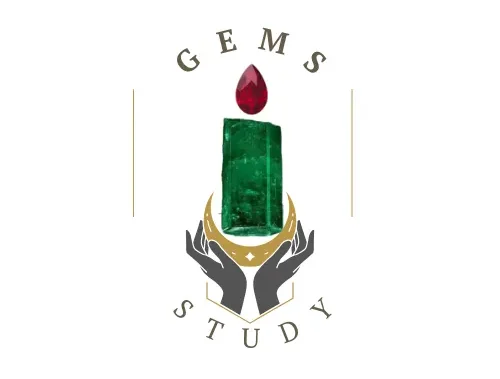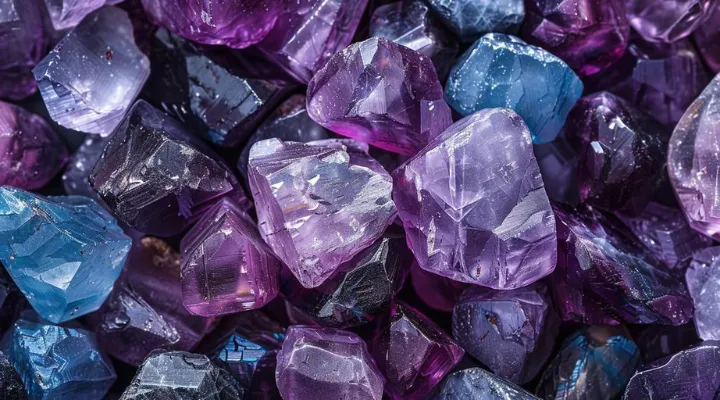Introduction
Imagine wearing a gemstone that glows emerald-green in daylight but transforms into a deep reddish-purple under incandescent light. This is the enchanting magic of Alexandrite, a rare and mysterious gemstone prized for its remarkable color-changing ability. Sometimes referred to as an “emerald by day, ruby by night,” Alexandrite captivates gem enthusiasts, collectors, and jewelers alike.
In this comprehensive guide, we will explore everything about Alexandrite—from its origins and history to its scientific properties, symbolism, and value. Whether you’re a gemstone lover or considering purchasing Alexandrite jewelry, this article will offer valuable insights into one of the most fascinating gems on Earth.
Table of Contents
- What Is Alexandrite?
- The Discovery and History of Alexandrite
- The Science Behind Alexandrite’s Color Change
- Where Alexandrite Is Found: Mines and Sources
- Alexandrite’s Properties and Composition
- Symbolism and Lore of Alexandrite
- Alexandrite as a Birthstone and Anniversary Gem
- Factors Influencing Alexandrite’s Value
- Natural vs. Synthetic Alexandrite: What to Know
- How to Care for Alexandrite Jewelry
- Why Alexandrite Is So Rare and Valuable
- How to Buy Authentic Alexandrite
- Conclusion
1. What Is Alexandrite?

Alexandrite is a rare and valuable variety of the mineral chrysoberyl. What makes it unique is its phenomenal color change, which depends on the light source. In natural daylight, it appears green to bluish-green. Under incandescent or candlelight, it shifts to red, purplish-red, or raspberry color.
Discovered in Russia in the 1830s, Alexandrite’s enchanting transformation is due to complex interactions between light and its mineral composition. Today, it remains one of the most coveted and expensive gemstones on the market.
2. The Discovery and History of Alexandrite gemstone
Discovery
Alexandrite was first discovered in 1830 in the Ural Mountains of Russia. The gem was named after Alexander II, the heir apparent to the Russian throne. Its red and green colors mirrored the colors of imperial Russia, making it an instant favorite among Russian aristocracy.
Historical Significance
In Russia, Alexandrite was considered a good luck charm, associated with wealth and prosperity. Over time, it became known worldwide for its rarity and beauty, yet original Russian Alexandrites are now almost entirely mined out.
3. The Science Behind Alexandrite’s Color Change
Pleochroism

Alexandrite displays strong pleochroism, meaning it shows different colors when viewed from different angles. However, the dramatic color change is a different phenomenon.
Light Absorption
Alexandrite’s color shift is due to its unique crystal structure, which absorbs light differently depending on its wavelength:
- Daylight (rich in blue and green light): Alexandrite appears green or bluish-green.
- Incandescent light (rich in red wavelengths): The gem appears reddish-purple or raspberry.
Trace Elements
The presence of chromium as a trace element in Alexandrite is responsible for this optical phenomenon.
4. Where Alexandrite gemstone Is Found: Mines and Sources
While Russia was the original source of Alexandrite, deposits are now found in other parts of the world. However, high-quality Alexandrites are extremely rare.

Major Sources
- Russia (Ural Mountains): The finest and original Alexandrites.
- Sri Lanka: Produces larger stones, often with less distinct color changes.
- Brazil: Known for fine quality gems with strong color shifts.
- Tanzania and Madagascar: Recent sources with varying quality.
Mining Challenges
Alexandrite mining is difficult due to its scarcity. Most Alexandrite today is found as secondary deposits in riverbeds or gravel pits.
5. Alexandrite’s Properties and Composition
| Property | Detail |
|---|---|
| Chemical Composition | BeAl₂O₄ (Beryllium Aluminum Oxide) |
| Hardness | 8.5 on the Mohs Scale |
| Crystal System | Orthorhombic |
| Refractive Index | 1.746 – 1.755 |
| Specific Gravity | 3.73 |
Alexandrite’s hardness makes it suitable for everyday wear, though care should be taken to prevent scratches and damage.
6. Symbolism and Lore of Alexandrite gemstone

Symbolism
- Balance: Its color change symbolizes adaptability and balance.
- Luck and Fortune: Believed to bring good fortune to its wearer.
- Love and Romance: Often associated with love and emotional well-being.
Cultural Significance
In Russia, Alexandrite became a symbol of nobility and prestige. In other cultures, it is said to enhance intuition and creativity.
7. Alexandrite gemstone as a Birthstone and Anniversary Gem
Birthstone

Alexandrite is one of the birthstones for June, along with pearl and moonstone. It’s perfect for Geminis and Cancerians who embody duality and change.
Anniversary Gemstone
It is traditionally given as a gift for the 55th wedding anniversary, symbolizing enduring love and the ability to adapt over time.
8. Factors Influencing Alexandrite’s Value
1. Color Change Quality
The most valuable Alexandrites show a strong and distinct color change from green to red. Stones with muted or incomplete shifts are less valuable.
2. Clarity
Clear Alexandrites with minimal inclusions are rarer and command higher prices.
3. Carat Weight
Large Alexandrites (over 1 carat) are extremely rare and expensive. The price per carat increases exponentially with size.
4. Origin
Russian Alexandrites are considered the gold standard and often fetch higher prices due to their historical significance.
9. Natural vs. Synthetic Alexandrite: What to Know
Natural Alexandrite

- Formed over millions of years in the Earth’s crust.
- Rare and expensive.
- Often comes with certificates of authenticity from reputable labs (GIA, IGI).
Synthetic Alexandrite
- Lab-created using processes like Czochralski pulling.
- Physically and chemically identical to natural Alexandrite.
- More affordable but should be clearly disclosed by sellers.
How to Tell the Difference
Always ask for certification and gemological reports to distinguish between natural and synthetic stones.
10. How to Care for Alexandrite Jewelry
Although Alexandrite is durable, proper care is essential to maintain its brilliance.
Cleaning
- Use lukewarm soapy water and a soft brush.
- Avoid ultrasonic cleaners if the stone has inclusions.

Storage
- Store separately from other gemstones to avoid scratching.
- Wrap in a soft cloth or place in a padded jewelry box.
11. Why Alexandrite Is So Rare and Valuable
Extreme Rarity
- Very few natural Alexandrites exist.
- High-quality stones over 1 carat are exceptionally rare.
Phenomenal Property
- The color-change phenomenon is unparalleled in the gemstone world.
Historical and Cultural Importance
- Connection to Russian royalty and mystique adds to its allure.
12. How to Buy Authentic Alexandrite
1. Purchase from Reputable Sellers

Choose jewelers or dealers who provide certificates from well-known gemological labs.
2. Verify Color Change
Inspect the gemstone in both natural daylight and incandescent light to observe its color change.
3. Examine Clarity and Cut
Look for stones with good transparency and expert cuts that maximize color play.
4. Confirm Origin
Russian Alexandrites are especially prized but also more expensive.
13. Conclusion
The mystique of Alexandrite lies in its magical ability to change color, captivating anyone who sees it. Its rarity, combined with rich history and optical wonder, makes it one of the most desirable gemstones in the world.
Whether you’re a gem collector or someone looking for a unique piece of jewelry, Alexandrite offers something truly special. Its adaptability symbolizes change, balance, and harmony, making it an excellent choice for those who value both beauty and meaning in their gemstones.

